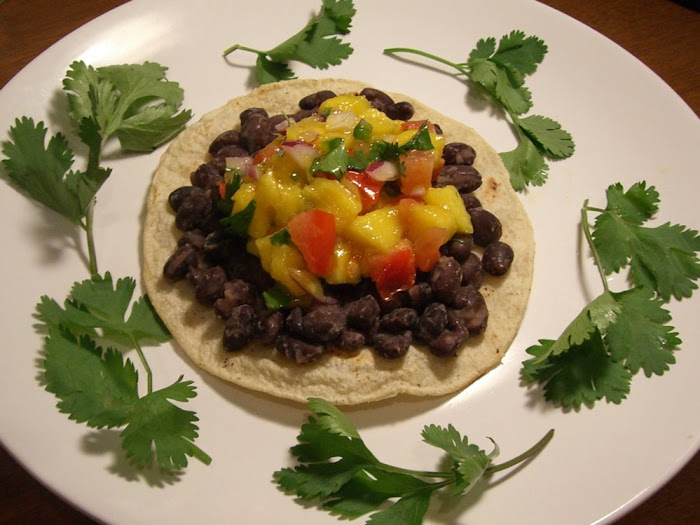Why buy local?
There are countless reasons why buying local food is both rewarding and delicious, including enjoying the taste of fresh food, improved health and nutrition, environmental stewardship, support for family farms and rural communities, and ensuring animal welfare.
There is also significant peace of mind in knowing where our food comes from. One of the biggest benefits to buying food locally is having someone to answer questions about how it was grown and raised. What goes into that loaf of bread? Can we be certain that the hog that is now bacon lived a life without suffering? How do we know those jalapeños are salmonella free?
Developing a relationship with local farmers gives us an "in" with our local food system. At farmers' markets we can get answers to questions like: When do tomatoes come into season? How might I use celeriac? Often, we can take a tour of the farm our food comes from. Some farmers are thrilled to share their knowledge and experience with their customers. Ask about the challenges your local farmers face and what they are doing to address them. It doesn't have to be complicated. Ask about the weather! Any farmer will be pleased to talk about how the growing season is going and how that affects the food they grow. Knowing local farmers can go a long way to simplifying buying local.
Another significant reason to buy local is to keep food miles to a minimum. "Food miles" refer to the distance a food item travels from the farm to your home. The food miles for items in the grocery store are, on average, 27 times higher than the food miles for goods bought from local sources.1
In the U.S., the average grocery store's produce travels nearly 1,500 miles between the farm where it was grown and your refrigerator. About 40% of our fruit is produced overseas and, even though broccoli is grown all over the country, the broccoli we buy at the supermarket travels an average of 1,800 miles to get there. Notably, nine percent of our red meat comes from foreign countries, some as far away as Australia and New Zealand.
Our food is trucked across the country, hauled in freighter ships over oceans, and flown around the world. A tremendous amount of fossil fuel is burned to transport foods such long distances, releasing carbon dioxide, sulfur dioxide, particulate matter and other pollutants that contribute to global climate change, acid rain, smog and air and sea pollution. The refrigeration required to keep our fruits, vegetables, dairy products and meats from spoiling during their long journeys burn up even more fossil fuel. In contrast, local and regional food systems produce 17 times less CO2.4
Economics of local
The significant difficulties of earning a living wage as a farmer are often masked by headlines about subsidies and record high crop prices. In reality, farmers are earning less producing crops these days than they did in 1969, despite the fact that American farmers have almost doubled productivity over the past four decades. Farmers aren't just earning less, current prices do not even cover the cost of production. Until just recently the difference between farm income nationwide and what it cost to grow and raise American crops could be counted in the billions. To make ends meet, and often to get health insurance, more than half of American farmers work a second off-farm job
Buying locally or directly from farmers can dramatically increase a farmer's income. The Maine Organic Farmers and Gardener's Association published a study that demonstrates what would happen if consumers shifted 1% of their purchasing power to buy locally grown products: farmers would see a gain of 5% in their income. Even better, buying direct from a farmer sends 90% of those food dollars back to the farm. Increasing farm income means more money can be spent locally by the farmer to run their business and home, helping keep the local economy alive.
Annually, Americans consume more than $600 billion9 in food. In most communities today food is purchased entirely at a grocery store or market, with only about 7% of local food dollars staying in the community.10 The other 93% of the modern food dollar travels to pay processors, packagers, distributors, wholesalers, truckers and the rest of the infrastructure that a global food system demands, a stark comparison to 40% in 1910 by contrast, 40% of food dollars spend remained in the local economy.11 When more food dollars stay in the community, through buying local, they are transformed into thriving main streets and local jobs.
If you can't buy local...
While some people may enjoy the challenge of an all-local diet, it doesn't work for everyone. If products are not available locally or regionally, look for items produced in the United States. Remember—local means as close to home as possible, in some cases that may mean oranges from California or Florida, rather than Chile or Israel.
When shopping for more exotic ingredients like chocolate, coffee or bananas, look for products labeled "Fair Trade" or "Rain forest Alliance Certified." The fair trade label means that farmers and farm workers in developing nations receive a fair price for their product, work directly with buyers, and prioritize sustainable farming methods without forced child labor and the use of a dozen of the most harmful pesticides. To be fair trade certified, products must be grown by small-scale producers who are able organize themselves in either cooperatives or unions. Fair trade products and companies are certified by independent third parties like Trans Fair USA or Fair Trade Labeling Organization International. Companies selling fair trade products have also shown commitment to helping the farmers they work with develop long-term sustainable communities and businesses.
Rain forest Alliance labeling follows standards set by the Sustainable Agriculture Network (SAN, formally known as the Conservation Agriculture Network) that are designed to promote tropical conservation. Products with this label are grown with environmentally responsible management practices including integrated pest and disease management, soil and water conservation. This standard also includes requirements for fair labor practices and good community relations. The Rain forest Alliance Certified label standards have been tailored to crops in specific regions. The standards specify that waterways must be protected with buffer zones and monitored for contamination. Workers must be paid minimum wage and have the right to organize.
Both of these labels are third-party certified, which means that independent inspectors ensure farmers' compliance. Since products like coffee and chocolate are difficult to grow in the United States, labels like these can be a good alternative to buying locally.
What you can do
Join the growing movement of consumers around the world who are making a little extra effort to find food raised nearby. You might be surprised to learn how many farms there are in your area. If you're not sure how to find them, just enter your zip code into the Eat Well Guide. You can also find out what foods are seasonal in your area by checking out our state-by-state listing of seasonal food.
Start small and don't expect to change all your eating habits overnight. Commit to purchasing one thing locally each week or each month. Once you see how easy it is and you enjoy the great taste, you'll surely go back for more!
Community supported agriculture (CSA) programs
CSA provides a direct link between local farmers and consumers. Each season, members purchase a share of a farmer's crop before it's planted. This allows the farmer to pay for seed, water and equipment upfront, so s/he is less reliant on banks and loans. Each week during the harvest time, usually June through October, the farmer delivers great tasting, healthy food to the members at pre-determined locations. In some instances, members pick up their share directly from the farm.
By purchasing a share in a farmer's crop, you share in the bounty. In good years, you will get more; in not-so-good years, you won't get as much. It's a great way to try vegetables you might not normally eat—or might never have heard of! Most CSA programs provide vegetables and fruit, though many also offer other products.
To find a CSA program in your area, visit the Alternative Farming Systems Information Center. If you can't find a CSA program in your area, start one! Just Food, a nonprofit organization based in New York City, helps start CSA programs in all five boroughs.
Farmers' markets
A great way to buy local is to shop at farmers' markets, where you can ask the farmer how the food was raised and produced.
Buy Local Challenge
The Buy Local Challenge is simply a pact you make with friends, family members or co-workers to eat locally. You can be as lenient or as strict as you like - from agreeing to cook one meal with local ingredients to eating only local food for one month (now that's a challenge!)
The key is to engage others in a conversation about eating locally, and what better way is there than to try it yourself? Share your experiences, swap recipes, and discover new foods! Then visit Sustainable Table's forum, The Parlour, to talk about your experiences.
If you would like to use this as an opportunity to educate others about local, sustainable food, show them The Meatrix films, or visit the Sustainable Table web site for information you can print out and share.
Vanguard Communications, a public relations firm in Washington DC, developed their own Buy Local Challenge. Visit their Buy Local Challenge for ideas on what you can do.
Adopt a local farmer
You can use the Eat Well Guide to find a farmer or farmers' market in your area. If you find a farmer you like, "adopt" him or her.
* Encourage your friends and neighbors to buy the farm's products.
* Invite the farmer over for a sustainable dinner party and ask them talk
to your family and friends about what they do.
* Get your local supermarket to start carrying their products.
* Help get the word out about what good farmers they are!
Grow Your Own
Whether it's a plot in your backyard or a small window herb garden, growing your own food is a richly rewarding experience. Many towns have gardening classes, but it's easy to simply buy some seeds and experiment. The National Gardening Association has tips on getting started.( Ask me if you live in Las Vegas, Nevada)
If you live in an urban area and don't have land to plant on, you can often find community gardens that offer plots in exchange for some volunteer time. Visit the American Community Gardening Association for more information. And once you grow all that great food, learn how to can, freeze or preserve it.
The Next film is dedicated to our Planet ! Please watch 1:33 Min long
About the film !
***We are living in exceptional times. Scientists tell us that we have 10 years to change the way we live, avert the depletion of natural resources and the catastrophic evolution of the Earth's climate.
The stakes are high for us and our children. Everyone should take part in the effort, and HOME has been conceived to take a message of mobilization out to every human being.
For this purpose, HOME needs to be free. A patron, the PPR Group, made this possible. EuropaCorp, the distributor, also pledged not to make any profit because Home is a non-profit film.
HOME has been made for you : share it! And act for the planet.
Yann Arthus-Bertrand
PPR is proud to support HOME
http://www.ppr.com
HOME is a carbon offset movie
http://www.actioncarbone.org
More information about the Planet
http://www.goodplanet.info
Website: http://www.home-2009.com
Chef Mayra
702.722-0108 Office
http://MyChefMayra.com/
Connect Chef Mayra a.k.a Dr Flavor:
LinkedIn| Facebook| BlogSpot & TV/Radio Show | Ning | Twitter | BlogSpot
Why Organic, Why Animal Free & Why Green?
About The Dr of Flavor
- Vegan Carib Chef Mayra
- Cakes for all Occasions VEGAN MEALS TO GO ! call for a quote all services are personalized **Five - Three - Two days Meal Plans + Bonus meals free per week. Email us at Bakery@MyChefMayra.com Cooking Classes.. Be part of the Chef Cooking Show. http://www.chefmayra.com/show.html Let the Chef help you plan some healthy meals. Sports Nutrition, In home catering, PRIVATE AND PUBLIC cooking lessons, Caribbean & Southwest cuisine and sport Nutrition. The Chef have helped her clients: Improve eating habits Lose weight Break the sugar addiction Find balance Increase energy and vitality Improve chronic ailments Heal chronic skin problems Learn easy and fun cooking/shopping techniques to better improve your eating habits CONTACT ME TODAY FOR A FREE HEALTH HISTORY CONSULTATION ! Vegan Food Is SEXY ! Healthy Food has Flavor Let me cook for you
GoingGreen.com Presents Every Wednesday at Noon (Pacific Time) Chef Mayra Cooking; TV Show
chefmayra on livestream.com. Broadcast Live Free
Monday, June 8, 2009
Why DO I need to buy Local or Support the Local Vendors?
Labels:
caribbean,
chef,
chef mayra,
dr flavor,
GMO,
green,
green kitchen,
health,
reno nevada,
reusable bags,
vegan
Subscribe to:
Post Comments (Atom)
** LOOK ma" No Eggs!

Vegan Dessets OO SEXY !!
ooo BABE ~ IS GOOD

THIS COULD BE FUN












No comments:
Post a Comment